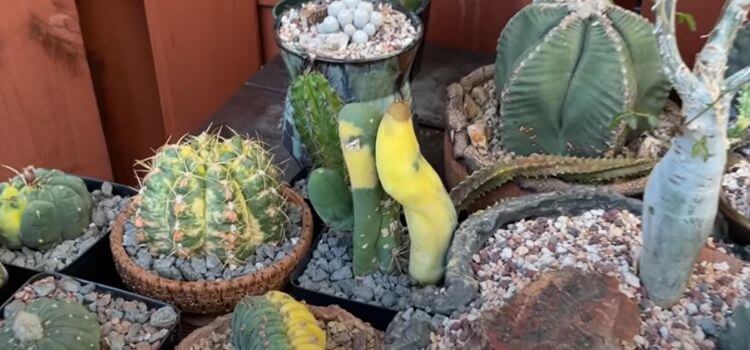As an Amazon Associate, I earn from qualifying purchases.
A dead cactus looks shriveled and discolored, often turning brown or black. Its texture becomes soft and mushy, indicating decay.
Cacti are hardy plants, but they can die for various reasons. Overwatering, pests, and extreme temperature changes are common culprits. Recognizing a dead cactus helps prevent further plant loss. Healthy cacti are firm and green, with vibrant spines. Dead cacti lose their firmness and color.
Proper care ensures cacti thrive, adding beauty to any space. Regularly check for signs of distress to maintain plant health. Understanding how a dead cactus looks aids in timely intervention. This knowledge is crucial for both novice and experienced gardeners. Save your cactus by identifying and addressing issues early.
Signs Of Death
Curious about what a dead cactus looks like? This guide will help you recognize the signs of death in a cactus. Understanding these signs can save your plant. Here, we will discuss color changes and wilting appearances.
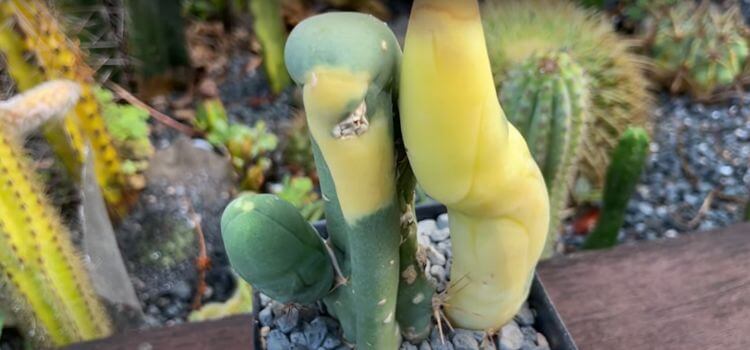
Color Changes
Cacti are usually green, but a dying cactus changes color. This is one of the first signs. You might see brown, yellow, or even black spots. These spots mean the cactus is sick. They often spread over the entire plant. Sometimes, the cactus turns a pale green. This is a sign it is not getting enough nutrients.
Below are common color changes that indicate a cactus is dying:
- Brown spots: Often due to rot or disease.
- Yellow spots: Can mean too much sun or water.
- Black spots: Usually a sign of severe rot.
- Pale green: Indicates lack of nutrients.
These color changes mean your cactus needs help. Take action quickly to save it.
Wilting Appearance
A healthy cactus stands tall and firm. A dying cactus looks wilted. The cactus may start to lean. This is a sign it is losing its strength. Sometimes, the cactus shrinks and looks smaller. This happens because it is losing water.
Here are some signs of a wilting cactus:
- Leaning: The cactus cannot support itself.
- Shrinking: The cactus is losing water.
- Wrinkled skin: Indicates dehydration.
Another sign is that the cactus feels soft. A healthy cactus is firm to the touch. A soft cactus means it is rotting inside. This is a serious sign of death. You might also see that the spines fall off easily. Healthy spines are hard to remove. If they fall off, the cactus is in trouble.
Recognizing these signs can help you save your cactus. Act quickly if you see these symptoms. This can make the difference between life and death for your plant.
Physical Characteristics
A cactus is a tough plant. But even tough plants can die. How do you know if a cactus is dead? Let’s look at the physical characteristics. These clues will help you spot a dead cactus.
Shriveled Texture
A dead cactus often has a shriveled texture. This happens when the cactus loses water. The skin of the cactus wrinkles and looks dry. It may even look like an old raisin.
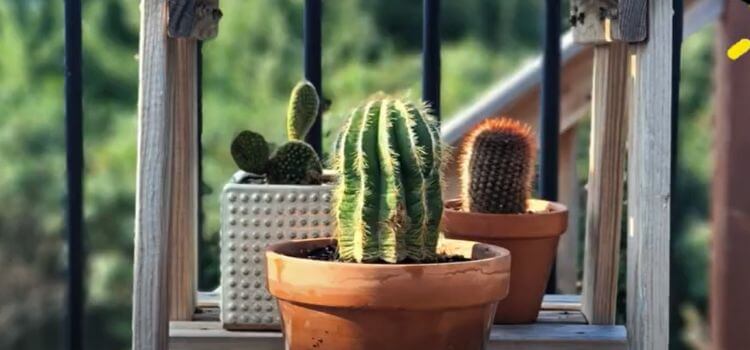
Here are some signs of a shriveled cactus:
- The skin looks wrinkled.
- The color may fade.
- It feels dry to the touch.
Sometimes, a shriveled cactus may look smaller. This is because it has lost water. A healthy cactus is plump and full. But a dead cactus is thin and dry. The leaves, if any, may fall off easily. The cactus might also look like it is shrinking.
Another clue is the color change. A healthy cactus is green. A dead cactus might turn brown or even black. This color change shows that the cactus is not healthy anymore. It can no longer hold water. So, keep an eye out for these signs.
Soft Spots
Soft spots on a cactus are another sign of trouble. These spots can mean the cactus is dead or dying. Healthy cacti are firm and strong. But dead cacti feel soft and mushy.
Here are some things to check for:
- Press gently on the cactus skin.
- Does it feel soft?
- Are there areas that feel mushy?
If you find soft spots, the cactus may have rot. This rot can spread quickly. It starts from the inside and moves out. The cactus may look fine on the outside, but inside it is decaying. These soft spots can also smell bad. A healthy cactus has no smell. But a dead cactus with rot can have a foul odor.
Another sign is leaking fluid. If you see liquid coming from the soft spots, the cactus is in trouble. This fluid can be yellow or brown. It means the cactus is breaking down inside. So, soft spots are a clear sign that the cactus is not healthy anymore.
Common Types
Cacti are hardy plants, but they can still die. Knowing what a dead cactus looks like can help you save your other plants. There are common types of cacti that show specific signs when they die. Understanding these signs helps in identifying dead cacti and taking necessary actions.
Saguaro
Saguaros are tall and iconic cacti. They can live for many years. A dead Saguaro has clear signs. The first sign is a shrinking and wrinkling appearance. The cactus starts to lose its firmness. The spines may fall off or become loose. The color of the cactus changes. It turns from green to brown or gray. The cactus might also develop black spots. These spots are a sign of rot.
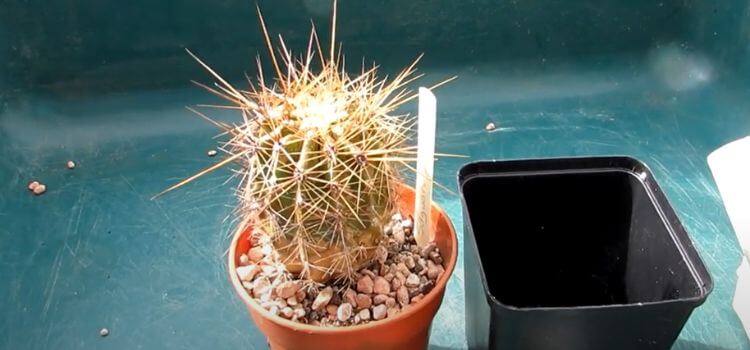
Another sign is the presence of holes and cavities. These holes are caused by pests or decay. A healthy Saguaro stands tall. A dead one might start to lean or collapse. The roots of the cactus may also be exposed. This happens because the plant is no longer anchored well in the soil. To summarize, look for:
- Shrinking and wrinkling
- Color change to brown or gray
- Black spots and rot
- Holes and cavities
- Leaning or collapsing
- Exposed roots
Barrel Cactus
Barrel cacti are round and short. They also show clear signs when dead. The first sign is a loss of color. The cactus turns from green to yellow or brown. The cactus starts to shrink and wrinkle. It feels soft and mushy. The spines become loose and may fall off. Another sign is the presence of black or brown spots. These spots indicate rot.
The cactus may also have holes and cavities. These are caused by pests or decay. A healthy Barrel cactus stands firm. A dead one might tip over or collapse. The roots may be exposed and rot. To recap, look for:
- Loss of color to yellow or brown
- Shrinking and wrinkling
- Soft and mushy texture
- Loose or fallen spines
- Black or brown spots
- Holes and cavities
- Tipping over or collapse
- Exposed and rotting roots
Environmental Factors
Cacti are known for their resilience and ability to thrive in harsh conditions. Yet, even these tough plants can die. Understanding the environmental factors that affect cacti is crucial. This helps in identifying whether a cactus is dead or simply struggling. In this blog post, we will discuss two major factors: extreme heat and overwatering.
Extreme Heat
Excessive heat can be detrimental to a cactus. While these plants are adapted to hot climates, they still have their limits. Prolonged exposure to extreme temperatures can cause irreversible damage. The following signs may indicate a cactus is suffering from extreme heat:
- Discoloration: Cactus may turn yellow or brown.
- Shriveling: The plant looks shrunken and dehydrated.
- Burn Marks: Black or dark spots appear on the surface.
Heat damage often starts at the tips and edges of the cactus. The plant may also become soft and mushy. It’s essential to monitor your cactus during hot spells. Providing shade or moving the cactus indoors can help. Regularly check the soil moisture as well. Extreme heat can dry out the soil quickly.
Overwatering
Overwatering is a common cause of cactus death. Cacti are succulents, which means they store water in their tissues. Too much water can lead to root rot and other issues. Here are some signs that your cactus might be overwatered:
- Soft and Mushy Texture: The plant feels squishy to the touch.
- Foul Odor: Decaying roots produce a bad smell.
- Mold Growth: White or black mold appears on the soil or plant.
To avoid overwatering, let the soil dry out completely between waterings. Use a pot with drainage holes. Water sparingly and only when needed. If you suspect overwatering, remove the cactus from its pot. Inspect the roots and trim any rotten parts. Replant it in fresh, dry soil.
Pest Infestation
Cacti are hardy plants, but they can die. Pest infestations are one reason. When pests attack, cacti struggle. Identifying pests helps save your cactus. Let’s explore what a dead cactus looks like due to pests.
Mealybugs
Mealybugs are tiny pests. They are white and cotton-like. They hide in cactus crevices. Mealybugs suck plant sap. This weakens the cactus. Signs of mealybugs include:
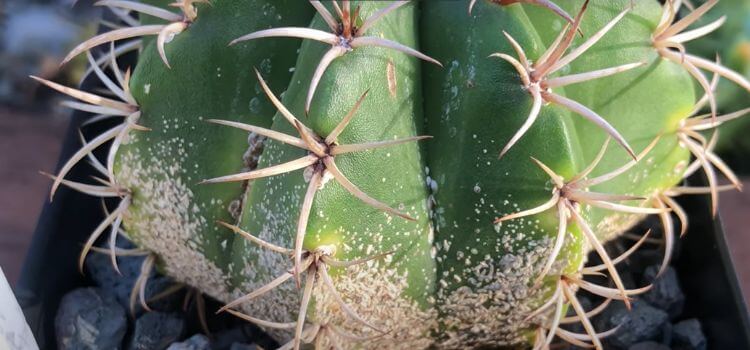
- White, fluffy spots on the cactus
- Sticky residue on the plant
- Yellowing of the cactus
Mealybugs leave behind honeydew. This sticky substance attracts ants. Ants protect mealybugs, making the problem worse. Mealybugs can cause root rot. This is when roots turn mushy. The cactus will then die.
Control mealybugs by:
- Using rubbing alcohol on a cotton swab
- Applying insecticidal soap
- Using neem oil spray
Spider Mites
Spider mites are tiny red or brown pests. They are hard to see. These pests spin webs on the cactus. Spider mites suck the plant’s juices. This causes the cactus to weaken. Symptoms of spider mites include:
- Fine webs on the cactus
- Speckled spots on cactus skin
- Yellowing and dropping of spines
Spider mites thrive in dry conditions. They spread quickly. To control spider mites, increase humidity. Use a humidifier near the cactus. Spray the cactus with water regularly. Insecticidal soap also helps. For severe cases, use miticides. Always follow instructions on the label.
Root Issues
Understanding what a dead cactus looks like can help you save your plant. Root issues are a common cause of cactus death. Recognizing early signs of trouble can prevent further damage. Two main problems are root rot and disease symptoms. Let’s dive into these issues to learn more.
Root Rot
Root rot is a serious issue for cacti. It happens when the roots stay wet for too long. Waterlogged soil is a common cause. Overwatering is the main reason for root rot. Roots need to breathe, but too much water suffocates them. This leads to decay and rot.
Signs of root rot include:
- Soft, mushy roots
- Foul smell coming from the soil
- Discolored roots, often brown or black
Healthy roots should be firm and white. If you notice soft or dark roots, it’s a sign of trouble. You can save your cactus by repotting it. Remove the rotten roots and use fresh, dry soil. Make sure the new pot has good drainage.
To prevent root rot, water your cactus sparingly. Let the soil dry out completely between waterings. Use a pot with drainage holes. This allows excess water to escape.
Disease Symptoms
Disease symptoms can also indicate a dead or dying cactus. Fungal and bacterial infections are common culprits. These diseases often enter through damaged parts of the cactus. Yellowing and wilting are early signs of disease.
Common disease symptoms include:
- Spots or lesions on the cactus skin
- Mold or mildew on the surface
- Sunken areas that feel soft to touch
Infected areas may ooze a sticky substance. Sometimes, you might see a white, cotton-like growth. This could be a sign of mealybugs or other pests. Diseases spread quickly, so it’s important to act fast.
Remove the infected parts of the cactus to stop the spread. Use sterile tools to cut away the diseased areas. Apply a fungicide to the remaining healthy parts. Keep the cactus in a dry, well-ventilated area.
Healthy care practices can prevent diseases. Avoid overwatering and provide good airflow. Inspect your cactus regularly for any signs of trouble.
Comparing Healthy Vs. Dead
Understanding the signs of a dead cactus helps in better plant care. By comparing a healthy and a dead cactus, you can quickly identify the differences. This guide will help you spot the warning signs to save your green friends.
Color Comparison
Healthy cacti usually have vibrant green or bluish-green hues. These colors indicate good health and proper water retention. Dead cacti, on the other hand, display a stark contrast in color.
Key differences include:
- Healthy cacti: Bright green or bluish-green.
- Dead cacti: Brown, black, or faded in color.
Discoloration is often the first sign of trouble. When a cactus turns brown or black, it might be a sign of rot. This change in color usually starts at the base and spreads upwards.
Faded green also signals a problem. It might mean the cactus is under severe stress. This stress can be due to overwatering, pests, or disease.
Shape Differences
Shape is another clear indicator of a cactus’s health. A healthy cactus has a firm, plump shape. This shape shows that the cactus is well-hydrated and thriving. A dead cactus, however, has a very different appearance.
Important shape differences include:
- Healthy cacti: Firm and plump.
- Dead cacti: Shriveled, collapsed, or mushy.
Shriveled cacti look wrinkled and dry. This often means the cactus is dehydrated or dying. A collapsed cactus may have lost its internal structure. This collapse happens when the tissues break down due to rot.
Mushy cacti are often beyond saving. The mushiness is a clear sign of severe rot. Once a cactus reaches this stage, it is usually too late to recover.
Disposal Methods
Cacti are hardy plants, but they can still die. A dead cactus often looks shriveled, discolored, and may even have mushy sections. Once you confirm your cactus is dead, it’s time to think about disposal methods. Proper disposal ensures that the plant does not cause any harm to the environment. Here, we will discuss two effective ways: recycling and composting.
Recycling
Recycling a dead cactus can be an eco-friendly option. Some parts of the cactus can be reused for crafts or gardening purposes. Here are a few steps to recycle a dead cactus:
- Remove spines: Carefully cut off the spines to avoid injuries.
- Dry the plant: Let the cactus dry out completely.
- Crush it: Crush the dried parts into smaller pieces.
These crushed pieces can be used in various ways:
| Use | Description |
|---|---|
| Mulch | Spread around plants to retain moisture and reduce weeds. |
| Craft Materials | Use in art projects or as decorative elements. |
| Soil Amendment | Add to soil to improve drainage. |
Composting
Composting is another great way to dispose of a dead cactus. This method turns the plant into valuable compost for your garden. Here’s how to compost a dead cactus:
- Cut into pieces: Chop the cactus into smaller sections for faster decomposition.
- Mix with other materials: Combine with kitchen scraps, leaves, and other compost materials.
- Maintain moisture: Keep the compost pile moist but not soggy.
The composting process involves:
| Stage | Description |
|---|---|
| Initial Breakdown | Microbes start to break down the plant material. |
| Heating | The pile heats up, killing pathogens. |
| Maturation | The compost cools down and matures. |
After a few months, you’ll have rich compost ready to use in your garden.

Frequently Asked Questions
Can You Revive A Dead Cactus?
Yes, you can revive a dead cactus. Trim dead parts, replant in well-draining soil, and water sparingly. Ensure adequate sunlight.
Is My Brain Cactus Dead?
Check for signs of life: green color, firm texture, and new growth. Brown, mushy, or dry spots indicate it might be dead.
What Does A Drowned Cactus Look Like?
A drowned cactus looks swollen, mushy, and discolored. Its base may turn black or brown, indicating root rot.
Why Did My Cactus Turn Brown And Die?
Your cactus likely turned brown and died due to overwatering, poor drainage, or insufficient sunlight. Ensure proper watering, well-draining soil, and adequate light to keep your cactus healthy.
Conclusion
Identifying a dead cactus is essential for plant care. Look for signs like brown, mushy, or shriveled stems. Understanding these indicators helps prevent further plant loss. Regularly check your cactus for health. Keeping your plants thriving ensures a beautiful, green environment.
Save your cactus by acting quickly when spotting these symptoms.

